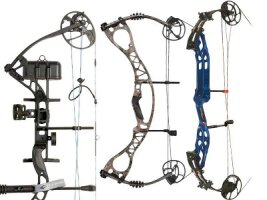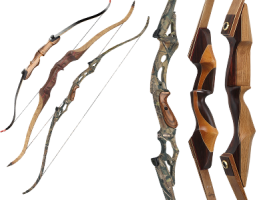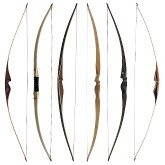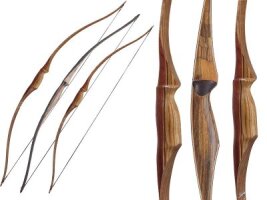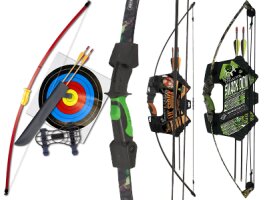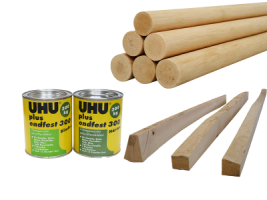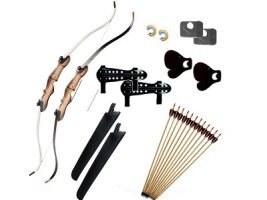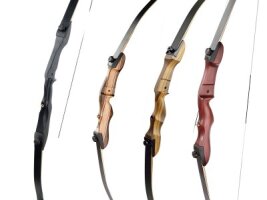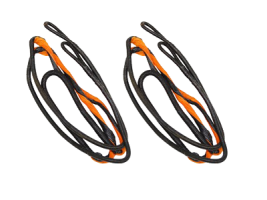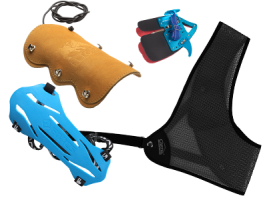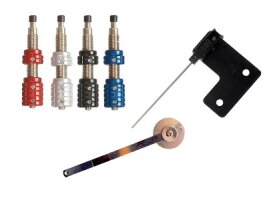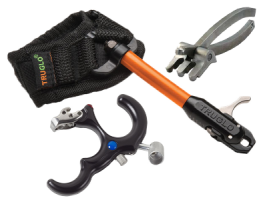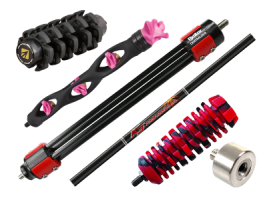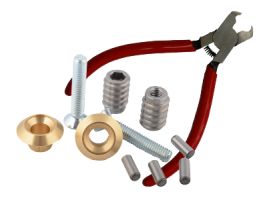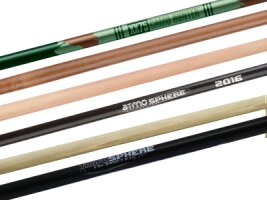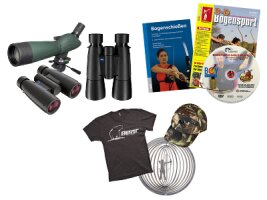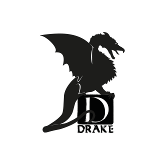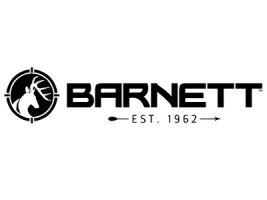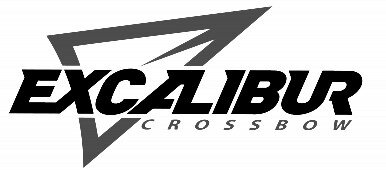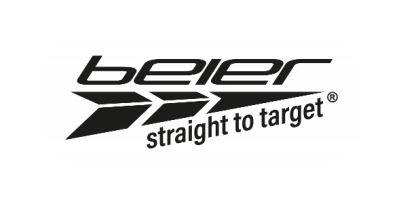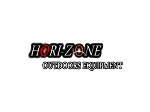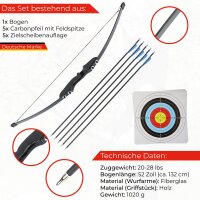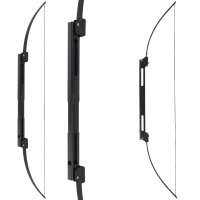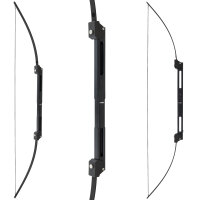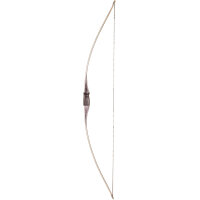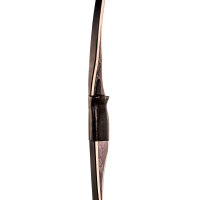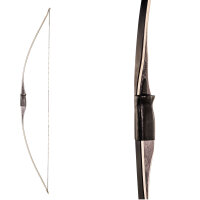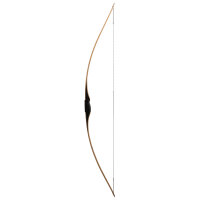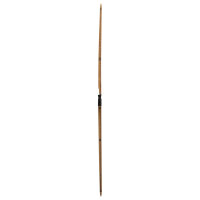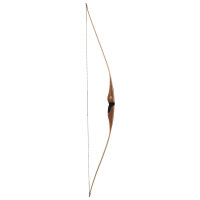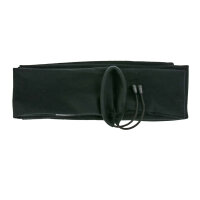Longbow archery represents a particularly traditional approach to archery, because the construction and use of longbows is still almost the same today as it was centuries ago, when this type of bow was also used in combat and for hunting and the longbowmen were specially trained fighters: An archer should be able to shoot 10 to 12 arrows per minute and hit a target 200 meters away. Even though longbows are only used for sport today, cocking and shooting with such a bow is still a matter of strength and precision, which you can get to know and train with one of the longbows from the archery-shop.co.uk range.

When choosing the right longbow, your size as well as your strength and experience in archery with longbows are important. A longbow was originally about the same size as the archers themselves, but today it is up to you to decide which size you think is right for you. BogenSportWelt offers you longbows between 47 and 72 inches, with the shorter bows being practical and manageable for beginners or particularly young longbow archers with smaller hands. Once you have decided on a length, you still need to consider which draw weight is suitable for you. This also depends on your technique and your own physical strength and can be determined when shooting with a spring scale. After measuring, you can choose a longbow with which you can achieve great results without excessive effort.
Longbows - the special features
Historical longbows were almost always made from yew wood, but today laminated strips of wood and plastic are usually used as the material. Popular wood for the construction of this type of bow today is rowan, but also robinia, which was imported from North America. At BogenSportWelt, you will find longbows made from various materials, which can affect not only the appearance, but also the stability and shooting behavior. Of course, most longbows can be ordered for both left-handed and right-handed users.
A longbow is usually made from high-quality, high-performance woods such as ash, walnut or maple. The bow is often reinforced by lamination in the area of the limbs. The longbow is the original form of the bow. It has a simple bend and is usually made in one piece. With a few exceptions, a longbow is shot traditionally and instinctively. This means that there are no bushings for the sight, arrow rest or stabilizer. A longbow should be uncocked after use to prevent wear on the limbs and the associated loss of draw weight.
Basic stance for the longbow
The feet are placed slightly offset at an approximate distance of 30 to 40 cm so that they form an angle of approx. 90° with the line of fire (see illustration). This is mirror-inverted for left-handed shooters. Shoulders and hips are not turned. Only the head looks towards the target. The legs are not pushed through, but should be held loosely. When shooting without an arrow rest, the bow should be held at a slight angle and the archer is advised to wear a shooting glove and bow glove. This prevents abrasions caused by the arrow passing over the hand when shooting.
Drawing and releasing the longbow
The basic position is assumed. The arrow is placed on the arrow rest or the gloved hand and nocked at a 90° angle to the string with the guide feather (this is usually a different color). The string and arrow are gripped with the index, middle and ring fingers. The index finger grips the string above the nock and the middle and ring fingers below the nock. The string lies in the first joint of the fingers. Look towards the target and focus on it.
The bow is then raised between the target and the shooter. The bow is not yet fully cocked, but only slightly pre-stressed, and the bow arm, i.e. the arm that holds the bow, is stretched. The inside of the elbow should be turned away from the shooting area. An incorrect arm position leads to abrasions and hematomas from contact with the string. For this reason, appropriate protective clothing should always be worn. For the very first attempts at shooting, it is recommended that the bow arm is not fully extended.
Then use the shoulder muscles to extend the bow until the bow hand touches the anchor point. The anchor point is the point that is touched by the hand with each shot, for example the corner of the mouth or a specific point along the lower jaw. It is important that this point is always in the same place so that the same pull-out is always guaranteed. When the anchor point is reached, the aiming is corrected once more and then the shot is released.There are two different approaches to aiming. Either you aim over the arrowhead (see table) or you shoot instinctively.
| Entferung zum Ziel | Position der Pfeilspitze gegenüber dem Ziel |
| ca. 10m | leicht unterhalb des Ziels |
| ca. 20m | deckungsgleich |
| ca. 30m | leicht oberhalb des Ziels |
The values given in the table are of course dependent on the draw weight and draw length, but they are a good guide for beginners in particular. With continuous training, every shooter will certainly be able to determine their individual values in a timely manner.
Breathing plays an important role in instinctive shooting. Breathe in deeply before raising the bow, focus on the target and exhale slowly and evenly as the bow is drawn. As soon as the anchor point is reached, the shot is released. There is no direct aiming in the conventional sense. During instinctive shooting, the mind and body are completely focused on the desire to hit the target. With regular training, the initial misses will quickly become a thing of the past.
You should pay attention to this with the longbow
For the very first attempts at shooting, it is recommended that you do not fully extend the bow arm. Then use your shoulder muscles to extend the bow until your bow hand touches the anchor point. The anchor point is the point that is touched by the hand with each shot, for example the corner of the mouth or a specific point along the lower jaw. It is important that this point is always in the same place so that the same pull-out is always guaranteed. When the anchor point is reached, the aiming is corrected again and then the shot is fired.
There are two different approaches to aiming. Either you aim via the arrowhead (see table) or you shoot instinctively. Breathing plays an important role in instinctive shooting. Before raising the bow, take a deep breath, focus on the target and exhale slowly and evenly as you draw the bow. As soon as the anchor point is reached, the shot is released. There is no direct aiming in the conventional sense. During instinctive shooting, the mind and body are completely focused on the desire to hit the target.
With regular training, the initial misses will quickly become a thing of the past. The values given in the table are of course dependent on the draw weight and draw length, but they are a good guide for beginners in particular. With continuous training, every shooter will be able to determine their individual values in a timely manner.
A longbow is usually shot traditionally and instinctively. This means that no aiming aids such as a sight or other attachments such as stabilizers are used. Some longbows also have no arrow rest, so the shooters use their thumb as a rest. If you want to shoot, proceed as follows:
- Position your body: stand sideways to the target line, with your legs shoulder-width apart. The foot on the side of the draw arm should be pointing slightly forward, while the other foot should be at an approximate right angle to the direction of the shot. Do not turn your hips or shoulders. Only the head turns towards the target.
- Nocking: Position the arrow with the nock in the string. Use the feather as a guide. It is almost always a different color and should be at a 90° angle to the string. Grip the string with three fingers - the index finger above the arrow and the ring and middle fingers below it.
- Draw the bow: Raise the bow arm while pulling the draw arm back. Draw out to your anchor point. Aim: Keep your eyes on the target and aim the bow in the direction you want to shoot. You can aim instinctively, i.e. just aim at the target and shoot, or aim over the arrowhead.
- Release: Gently release the string without tensing or twitching the bow.

